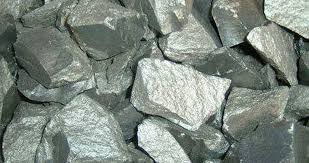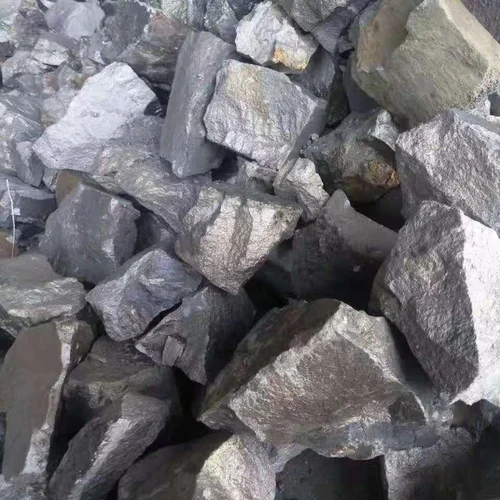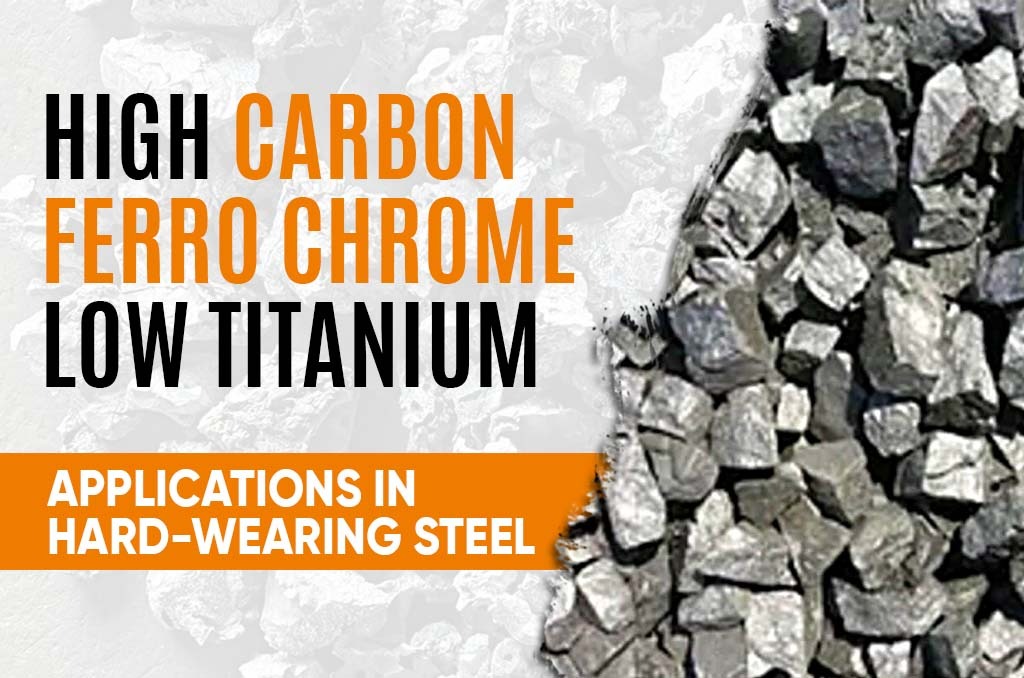High Carbon Ferro Chrome Low Titanium:
When it comes to manufacturing high-strength, abrasion-resistant steel products, High Carbon Ferro Chrome Low Titanium plays a pivotal role. This specialized ferroalloy is a key ingredient in producing hard-wearing steels that are capable of withstanding extreme environments — from mining equipment to industrial machinery and beyond.
In this blog, we will explore what High Carbon Ferro Chrome Low Titanium is, its properties, and its specific applications in hard-wearing steel, making it an essential material for demanding industries.
What is High Carbon Ferro Chrome Low Titanium?

What is High Carbon Ferro Chrome Low Titanium
High Carbon Ferro Chrome (HCFeCr) is an alloy of chromium and iron containing 60% to 70% chromium and high carbon content, generally between 6% and 8%. What makes Low Titanium variants of HCFeCr unique is their minimal titanium content, typically kept under 0.03%.
Titanium, although beneficial in some alloying applications, can form unwanted inclusions or compounds in certain steel grades that compromise strength, toughness, or wear resistance. Reducing titanium content is crucial in applications where clean microstructures and consistent performance under high stress are required.
Key Properties of HCFeCr Low Titanium
- High Chromium Content: Provides excellent corrosion resistance and hardness.
- Low Titanium: Ensures a cleaner alloy structure, leading to better mechanical performance.
- High Carbon: Promotes hardness and wear resistance in the final steel product.
- High Melting Point: Ideal for use in high-temperature steel manufacturing processes.
- Excellent Compatibility: Works well with other alloying elements like manganese, molybdenum, and vanadium.
Why Low Titanium Matters in Hard-Wearing Steel

High Carbon Ferro Chrome Low Titanium
In hard-wearing steels, consistency in the microstructure and reduction of inclusions are critical. Titanium, although a strong deoxidizer, can combine with carbon and nitrogen to form titanium carbides or nitrides. These inclusions can lead to cracking during forming processes or reduce toughness at low temperatures.
By choosing High Carbon Ferro Chrome Low Titanium, steelmakers can achieve:
- Improved Toughness and Ductility
- Reduced Risk of Micro-cracks
- Higher Wear Resistance
- Greater Structural Integrity in Finished Products
Applications in Hard-Wearing Steel
1. Mining and Earthmoving Equipment
Mining equipment, such as excavator buckets, dump truck bodies, and crusher liners, must endure constant impact, abrasion, and wear. The use of HCFeCr Low Titanium in these components helps deliver long-lasting durability and reduced maintenance.
2. Industrial Tooling and Dies
Tool steels used in forging, stamping, and cutting tools benefit significantly from the high hardness and wear resistance imparted by HCFeCr. The low titanium variant ensures fewer inclusions, allowing for a smoother tool surface and extended life.
3. Railroad and Track Components
Railway components, especially in high-speed or heavy-load applications, require superior hardness and fatigue resistance. High Carbon Ferro Chrome Low Titanium helps enhance these properties, improving safety and performance.
4. Armor and Defense Applications
Armor-grade steels need a fine balance of toughness, strength, and impact resistance. Reducing titanium ensures a cleaner alloy, which contributes to the resilience required in ballistic protection.
5. Industrial Conveyors and Chutes
Conveyor belts and chutes that transport abrasive materials like coal, limestone, and ore are prone to wear. HCFeCr with low titanium helps improve surface hardness and lifespan.
Environmental and Economic Advantages
- Reduced Alloying Additives: Cleaner alloy compositions require fewer secondary alloying elements.
- Extended Equipment Lifespan: High-wear resistance results in fewer replacements and reduced downtime.
- Energy Efficiency: Improved process efficiency due to consistent material properties.
Sourcing Quality High Carbon Ferro Chrome Low Titanium
It’s critical to source HCFeCr Low Titanium from a reliable supplier to ensure quality and consistency in your steel production. Manufacturers and industries looking for trusted supply can explore options from established producers like DS Alloyd Pvt Ltd — a reputed name known for delivering high-grade ferroalloys with precise compositions tailored for demanding applications.
Frequently Asked Questions (FAQs)
Q1. What is the difference between standard HCFeCr and Low Titanium HCFeCr?
A: The primary difference is the titanium content. Standard HCFeCr may have higher titanium, which can form unwanted inclusions in steel. Low Titanium HCFeCr minimizes this issue, improving steel performance.
Q2. Why is low titanium important in wear-resistant steel?
A: Low titanium ensures fewer non-metallic inclusions, enhancing the toughness, durability, and fatigue resistance of steel used in harsh environments.
Q3. Can I use HCFeCr Low Titanium in stainless steel production?
A: Yes, it can be used in specific stainless steel grades where low titanium content is essential for achieving high cleanliness and consistent mechanical properties.
Q4. Is HCFeCr Low Titanium more expensive than regular HCFeCr?
A: It may carry a slightly higher cost due to the additional processing involved, but the performance benefits and reduced equipment wear make it cost-effective in the long run.
Q5. Where can I buy High Carbon Ferro Chrome Low Titanium?
A: You can get high-quality High Carbon Ferro Chrome Low Titanium from DS Alloyd Pvt Ltd, a trusted supplier in the ferroalloy industry.
Final Thoughts
The role of High Carbon Ferro Chrome Low Titanium in the production of hard-wearing steels cannot be overstated. With its high chromium and low titanium content, this alloy helps deliver the performance, strength, and durability required in some of the world’s toughest industrial applications. Whether you’re in mining, manufacturing, or defense, choosing the right grade of ferroalloy makes a significant difference in the quality of your steel — and ultimately, the success of your project.
